#St Derfel
Text
5th April
St Derfel’s Day

Source: St Derfel Gadarn video posted by On This Day on YouTube
Today is St Derfel’s Day. Derfel was one of King Arthur’s legendary knights, known as Derfel Cadarn or Gadarn, meaning ‘the Strong’. He was present at the catastrophic battle of Camlann at which the disastrous civil war between Arthur and his illegitimate son, Mordred, culminated in the death of Mordred and the apparent fatal wounding of his father. With the court in Camelot collapsing in the aftermath of the battle, and the Saxons beginning to overrun Britain as a consequence, the distraught Derfel gave up soldiering for the monastic life.
So runs the Arthurian legend. Derfel however did exist and may well have been a Romano-British warrior in his youth. The battle of Camlann is supposed to have been a real event, taking place in 539, even if details are frustratingly vague. It is not even clear who the opposing sides were, but it is assumed to have been between the Romano-Britons and the Anglo-Saxons, with a Saxon victory being the likely outcome, so the outline of Derfel’s career change as described in legend, may well be based on fact.
Derfel became Abbot of Bardsey and later became the favourite saint at the church at Llandderfel, near Bala in Gwynedd. Apparently the church was equipped with a mechanical version of the saint , who showered blessings on the pilgrims that came to his church, often bearing livestock to be cured by Derfel’s effigy. Inevitably the Reformation interrupted this innocent practice and deeming the worship of Derfel’s peculiar statue as superstitious nonsense, militant Protestants carted the mechanical Derfel all the way to Smithfield in London in 1538 and burned it. The saint’s staff, and the remains of a wooden horse on which the martial Derfel sat, can still be seen in Llandderfel church.
8 notes
·
View notes
Text
It's St Derfel's Day
...thought someone should probably know
0 notes
Text
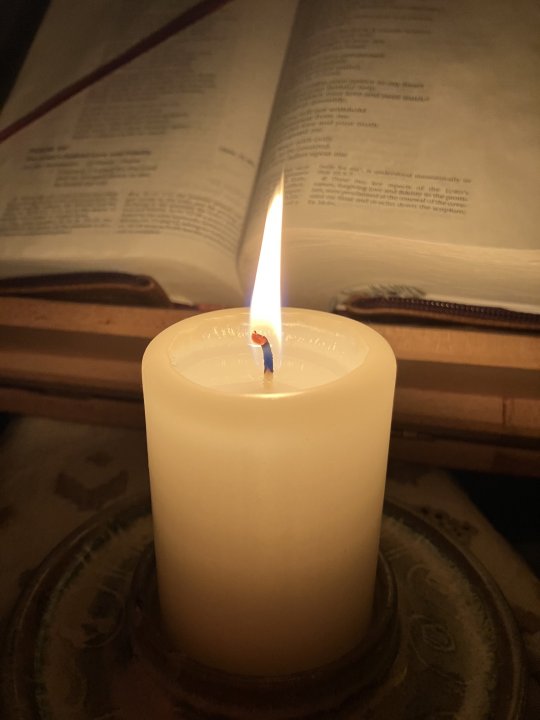
SAINTS OF THE DAY FOR MAY 22
Bl. John Forest, 1538 A.D. Martyr of England, the confessor of the first wife of King Henry VIII, Queen Catherine of Aragon. He became a Franciscan at Greenwich at the age of seventeen and studied at Oxford. John opposed Henry’s divorce and the suppression of religious orders. Because of this he was arrested at Newgate and ordered to agree to the Oath of Supremacy. Refusing, John was dragged on a hurdle to Smithfield and then burned to death at the stake. A wooden statue of St. Derfel was burned with John. He was beatified in 1886.
ST. JULIA, VIRGIN AND MARTYR OF CORSICA-Patron of Corsica, Julia was one of the young Carthaginians that a slave merchant wanted to sell in Gaul. She was kidnapped in a port of Corsica. True to her Christian faith, she refused to sacrifice to pagan gods. She is commemorated on May 22. https://www.vaticannews.va/en/saints/05/22/st--julia--virgin-and-martyr-of-corsica.html
St. Boethian, 7th century. Benedictine martyr and a disciple of St. Fursey. An Irishman by birth, Boethian built the Pierrepoint Abbey near Laon, in France. He was murdered there by rebellious monks.
ST. RITA OF CASCIA, AGOSTINIAN-The Church remembers Saint Rita on 22 May. She is known as patroness of lost causes. First a wife and exemplary mother, then an Augustinian nun, she asked Christ to share His Passion with her, and had the sign of a thorn on her forehead. Her remains are lodged in the Basilica of Cascia.
https://www.vaticannews.va/en/saints/05/22/st--rita-of-cascia--agostinian.html
St. Conall, 7th century. Abbot of Inniscoel Monastery in County Donegal, Ireland. A holy well there is named after St. Conall.
0 notes
Text
I just wanted you all to know that when Henry Tudor was just a year old a Welsh poet, Dafydd Nanmor, wrote a poem invoking all—I mean, all—of the Welsh saints to protect him, plus additional, non-Welsh ones. These are the saints he asks to protect the child (in order of appearance):
St Benedict and St Bernard, St Dyrnog, St Brothen and St Sulien and St Silin, St Buan, St Celynnin, St Beuno of Clynnog, St Cynin and his servants, St Cynan, St Asaph, St Cawrdaf, kinsman of Eudaf son of Caradog, St Collen, St Elian, St Cynwyd, Cynfelyn, St Cedwyn and St Cadog, St Cadfan and St Dyfnan, St Ust and St Dyfnig, St Caron and St Curig, St Patrick, St Pedrog, St Peris, St Cristiolus, St Dennis, St Dwynwen, St Peter, St John, St Gwynnen, St Padarn, St Gwynnog, St Fagan, bishop St Afan, Ifor, St Gregory, St George, St Môr and St Mwrog, St Clare, St Ilar, St Cynddylig, St Dominic, St Peblig, St Meilig, St Maelog,
—(I’m not done)—
St Dochwyn and St Tecwyn, and St Tygwy, St Dochdwy, St Winifred and St Tyfrïog, St Derfel and St Dwyfel and St Gredifel, St Dogmael, St Daniel and St Dwynog, St Deiniol and St Seiriol and St Saeran, Dardanus, St Stephen, St Cynan, St Cynog, St Deiniolen, Llawdden, St Cathen, St Ceitho, St David of Mynyw, St Dyfaenog, St Tybïe, St Einion and St Non, St Tegla, St Agatha, St Anna, St Enoch, St Tanwg and St Trinio, St James, St Egwad, St Tysilio, St Lleuddad, St Tysul, St Llawddog, St Lawrence, St Mark and St Richard, St Luke, St Lambert, St Edward and St Tyfrydog, and St Tydecho, St Teilo and St Telyddog.
Nanmor also asks Mary, Gabriel, Sariel, Thomas, Uriel, Michael and Rhiniel to “allow Henry to grow old for a long time”. This is the same poet that prophesised that Henry Tudor would be king but died before he could see it happen.
#when you remember the welsh age of saints was a thing#henry vii#dailytudors#artist: dafydd nanmor#poor nanmor he just liked this child so much
397 notes
·
View notes
Text
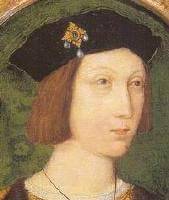
Out of the many poems that were done to celebrate Arthur's birth and extol his lineage was Bernard Andre, who later became his tutor:
"Come celebrate the child's birth,
Oh Muses, and the noble offspring born of illustrious royalty.
To celebrate the festal day, wreath your hair with a comely flower
Oh English and crown your brows with garlands.
Let the pipe blow, let boys and young girls dance
and stir the air with applause,
and let happy London celebrate festive games.
Behold the royal child Arthur arises,
the second hope of our kingdom!"
Arthur was the embodiment of his father's ambitions and some saw him as the true representation of Henry's union with EOY. John Skelton wrote:
"The rose both red and white
In one rose now doth both grow."
Some went as far as to say that he was the Prince that was promised. For those who love #GameofThrones, the phrase the prince that was promised that comes from the books and the name of the saga 'Song of Ice and Fire' has its basis on Tudor history and Arthurian lore. Just as we are all wondering what the hell song of ice and fire means (no, I don't think Jon Snow is a secret Targaryen, he is dead, sorry guys) and if it is a metaphor between the union of a Stark and Targaryen or the return of a savior as Melisandre believes; the Tudors saw themselves as the embodiment of Arthurian myths and as the saviors of their realm.
To be fair to them, every king did this. Every King saw himself as greater than he was. Edward I was one of the first that began to glorify the myth and EOY's father, Edward IV, saw himself through his Welsh lineage as the descendant of King Arthur.
Because he had more direct ties with Wales, people associated Henry Tudor more with these myths and when he journeyed to Bosworth he had for his standard the red dragon of Cadwalldr, and Welsh bard sang songs of him, saying that he was their prophesized savior.
When Arthur was born (at Winchester no less where it was believed that Camelot once stood), the same effect took place, only this time it was amplified because Arthur was the first prince born of this union between Lancaster and York.
The Welsh bard, Dafydd Lloyd, went further, calling on many Welsh saints to give the new Arthur protection against evil:
"Let St. Mary and St. Mwrog secure
our prince and his cradle.
Let the hand of Beuno and Ilar
preserve him from all ill,
and the hand of Derfel, the great guide
and the hand of Christ."
Finally there is one of the best known ballads "The Peace of the Roses" by Thomas Phelyps that celebrated the song of the red and white, the union of Lancaster and York which Arthur represented:
"I love the rose both red and white;
Is that your pure, perfect appetite?
To hear talk of them is my delight.
Joyed may we be
our Prince to see
and roses three!"
5 notes
·
View notes
Text

SAINTS OF THE DAY FOR APRIL 05
ST. IRENE, VIRGIN AND MARTYR
Peace, charity and purity: these were the baptismal names assumed by the three martyr sisters in Thessaloniki in 304 under the governor Dulcitius, during Diocletian's persecutions. Irene was the youngest; she was guilty of hiding the Holy Scripture and refusing to eat food offered to the gods. A Roman widow of the sixth century; feast, October 5. According to St. Gregory the Great (Dial. IV, ch. xiii) she was the daughter of the younger Symmachus, a learned and virtuous patrician of Rome, whom Theodoric had unjustly condemned to death (525). Becoming a widow before the end of the first year of her married life, she, still very young, founded a convent and hospital near St. Peter’s, there spent the remainder of her days in austerities and works of mercy, April 6
Martyrs of Lesbos, Five virgin Roman Catholic maidens who suffered martyrdom for the faith on the Greek island of Lesbos
Martyrs of London. Three groups of martyrs who were put to death in the late sixteenth century in London by English authorities. (d. 1582) Martyrs executed for treason, by virtue of their supposed complicity in the entirely spurious plot known as the “Conspiracy of Reims and Rome.” (d. 1588) A group that suffered martyrdom following the defeat of the Spanish Armada and the increase of anti-Catholic feeling in Elizabethan England. (d. 1591) A group suffering martyrdom as a result of the British government’s enforcement of anti-Catholic policies.
St. Ethelburga, 647 A.D. Wife of King St. Edwin of Northumbria, England, daughter of St. Ethelbert of Kent, also called Tate. St. Paulinus was her chaplain. Ethelburga converted King St. Edwin, and when he died, she founded a convent at Lyminge. Ethelburga served as abbess until her death.
St. Derferl-Gadarn, 5th or 6th century. Welsh hermit, reported to have been in the battle of Camblan, where King Arthur died. He may have been a hermit before becoming a monk at Lianderfel, in Gwynedd, Wales. A carved-wood statue depicting Derfel-Gadarn as a mounted soldier was used to burn Blessed John Forest at Smithfield in 1538, by order of Thomas Cromwell.
St. Maria Crescentia Hoss, Roman Catholic Nun. She was a contemplative nun of the Third Order Regular of St. Francis. Feastday April 5
ST. VINCENT FERRER, DOMINICAN
0 notes
Text
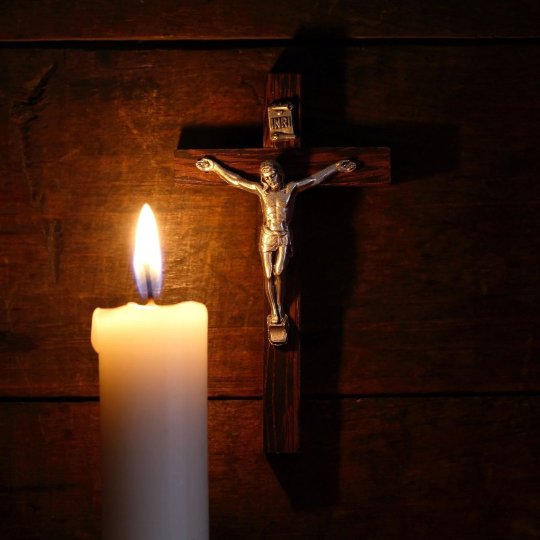
SAINTS OF THE DAY FOR MAY 22
Bl. John Forest, 1538 A.D. Martyr of England, the confessor of the first wife of King Henry VIII, Queen Catherine of Aragon. He became a Franciscan at Greenwich at the age of seventeen and studied at Oxford. John opposed Henry’s divorce and the suppression of religious orders. Because of this he was arrested at Newgate and ordered to agree to the Oath of Supremacy. Refusing, John was dragged on a hurdle to Smithfield and then burned to death at the stake. A wooden statue of St. Derfel was burned with John. He was beatified in 1886.
ST. JULIA, VIRGIN AND MARTYR OF CORSICA-Patron of Corsica, Julia was one of the young Carthaginians that a slave merchant wanted to sell in Gaul. She was kidnapped in a port of Corsica. True to her Christian faith, she refused to sacrifice to pagan gods. She is commemorated on May 22. https://www.vaticannews.va/en/saints/05/22/st--julia--virgin-and-martyr-of-corsica.html
St. Boethian, 7th century. Benedictine martyr and a disciple of St. Fursey. An Irishman by birth, Boethian built the Pierrepoint Abbey near Laon, in France. He was murdered there by rebellious monks.
ST. RITA OF CASCIA, AGOSTINIAN-The Church remembers Saint Rita on 22 May. She is known as patroness of lost causes. First a wife and exemplary mother, then an Augustinian nun, she asked Christ to share His Passion with her, and had the sign of a thorn on her forehead. Her remains are lodged in the Basilica of Cascia.
https://www.vaticannews.va/en/saints/05/22/st--rita-of-cascia--agostinian.html
St. Conall, 7th century. Abbot of Inniscoel Monastery in County Donegal, Ireland. A holy well there is named after St. Conall.
0 notes
Text

SAINTS OF THE DAY FOR MAY 22
Bl. John Forest, 1538 A.D. Martyr of England, the confessor of the first wife of King Henry VIII, Queen Catherine of Aragon. He became a Franciscan at Greenwich at the age of seventeen and studied at Oxford. John opposed Henry’s divorce and the suppression of religious orders. Because of this he was arrested at Newgate and ordered to agree to the Oath of Supremacy. Refusing, John was dragged on a hurdle to Smithfield and then burned to death at the stake. A wooden statue of St. Derfel was burned with John. He was beatified in 1886.
ST. JULIA, VIRGIN AND MARTYR OF CORSICA-Patron of Corsica, Julia was one of the young Carthaginians that a slave merchant wanted to sell in Gaul. She was kidnapped in a port of Corsica. True to her Christian faith, she refused to sacrifice to pagan gods. She is commemorated on May 22. https://www.vaticannews.va/en/saints/05/22/st--julia--virgin-and-martyr-of-corsica.html
St. Boethian, 7th century. Benedictine martyr and a disciple of St. Fursey. An Irishman by birth, Boethian built the Pierrepoint Abbey near Laon, in France. He was murdered there by rebellious monks.
ST. RITA OF CASCIA, AGOSTINIAN-The Church remembers Saint Rita on 22 May. She is known as patroness of lost causes. First a wife and exemplary mother, then an Augustinian nun, she asked Christ to share His Passion with her, and had the sign of a thorn on her forehead. Her remains are lodged in the Basilica of Cascia.
https://www.vaticannews.va/en/saints/05/22/st--rita-of-cascia--agostinian.html
St. Conall, 7th century. Abbot of Inniscoel Monastery in County Donegal, Ireland. A holy well there is named after St. Conall.
1 note
·
View note
Text
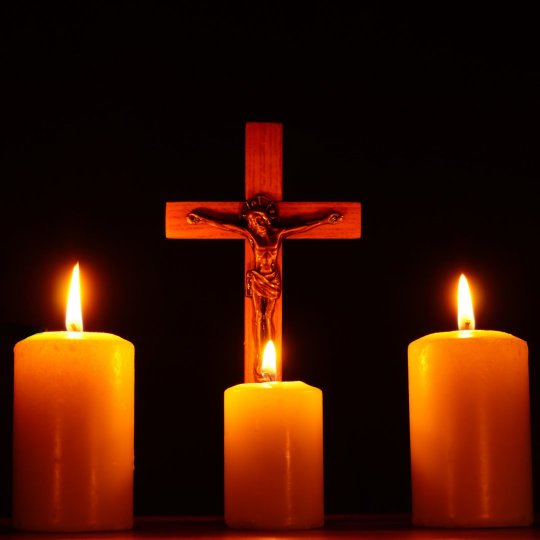
SAINTS OF THE DAY FOR APRIL 05
Martyrs of London. Three groups of martyrs who were put to death in the late sixteenth century in London by English authorities. (d. 1582) Martyrs executed for treason, by virtue of their supposed complicity in the entirely spurious plot known as the “Conspiracy of Reims and Rome.” (d. 1588) A group that suffered martyrdom following the defeat of the Spanish Armada and the increase of anti-Catholic feeling in Elizabethan England. (d. 1591) A group suffering martyrdom as a result of the British government’s enforcement of anti-Catholic policies.
St. Ethelburga, 647 A.D. Wife of King St. Edwin of Northumbria, England, daughter of St. Ethelbert of Kent, also called Tate. St. Paulinus was her chaplain. Ethelburga converted King St. Edwin, and when he died, she founded a convent at Lyminge. Ethelburga served as abbess until her death.
St. Derferl-Gadarn, 5th or 6th century. Welsh hermit, reported to have been in the battle of Camblan, where King Arthur died. He may have been a hermit before becoming a monk at Lianderfel, in Gwynedd, Wales. A carved-wood statue depicting Derfel-Gadarn as a mounted soldier was used to burn Blessed John Forest at Smithfield in 1538, by order of Thomas Cromwell.
ST. IRENE, VIRGIN AND MARTYR
Peace, charity and purity: these were the baptismal names assumed by the three martyr sisters in Thessaloniki in 304 under the governor Dulcitius, during Diocletian's persecutions. Irene was the youngest; she was guilty of hiding the Holy Scripture and refusing to eat food offered to the gods. April 5
ST GALLA, ROMAN WIDOW
a Roman widow of the sixth century; feast, October 5. According to St. Gregory the Great (Dial. IV, ch. xiii) she was the daughter of the younger Symmachus, a learned and virtuous patrician of Rome, whom Theodoric had unjustly condemned to death (525). Becoming a widow before the end of the first year of her married life, she, still very young, founded a convent and hospital near St. Peter’s, there spent the remainder of her days in austerities and works of mercy, April 6
St. Maria Crescentia Hoss, Roman Catholic Nun. She was a contemplative nun of the Third Order Regular of St. Francis. Feastday April 5
Martyrs of Lesbos, Five virgin Roman Catholic maidens who suffered martyrdom for the faith on the Greek island of Lesbos
ST. VINCENT FERRER, DOMINICAN
0 notes
Quote
ENGLISH SPEAKING SAINTS April 5
St. Ethelburga, 647 A.D. Wife of King St. Edwin of Northumbria, England, daughter of St. Ethelbert of Kent, also called Tate. St. Paulinus was her chaplain. Ethelburga converted King St. Edwin, and when he died, she founded a convent at Lyminge. Ethelburga served as abbess until her death.
St. Derferl-Gadarn, 5th or 6th century. Welsh hermit, reported to have been in the battle of Camblan, where King Arthur died. He may have been a hermit before becoming a monk at Lianderfel, in Gwynedd, Wales. A carved-wood statue depicting Derfel-Gadarn as a mounted soldier was used to burn Blessed John Forest at Smithfield in 1538, by order of Thomas Cromwell.
Martyrs of London. Three groups of martyrs who were put to death in the late sixteenth century in London by English authorities. (d. 1582) Martyrs executed for treason, by virtue of their supposed complicity in the entirely spurious plot known as the “Conspiracy of Reims and Rome.” (d. 1588)
A group that suffered martyrdom following the defeat of the Spanish Armada and the increase of anti-Catholic feeling in Elizabethan England. (d. 1591)
A group suffering martyrdom as a result of the British government’s enforcement of anti-Catholic policies.
1 note
·
View note
Text
Saint of the day May 22
Bl. John Forest, 1538 A.D. Martyr of England, the confessor of the first wife of King Henry VIII, Queen Catherine of Aragon. He became a Franciscan at Greenwich at the age of seventeen and studied at Oxford. John opposed Henry’s divorce and the suppression of religious orders. Because of this he was arrested at Newgate and ordered to agree to the Oath of Supremacy. Refusing, John was dragged on a hurdle to Smithfield and then burned to death at the stake. A wooden statue of St. Derfel was burned with John. He was beatified in 1886.
St. Boethian, 7th century. Benedictine martyr and a disciple of St. Fursey. An Irishman by birth, Boethian built the Pierrepoint Abbey near Laon, in France. He was murdered there by rebellious monks.
St. Conall, 7th century. Abbot of Inniscoel Monastery in County Donegal, Ireland. A holy well there is named after St. Conall.
St. Rita, Roman Catholic Patron of impossible cases, Saint Rita's tomb with her incorrupt body at the Basilica of Cascia. Feastday May 22
ST. JULIA, VIRGIN AND MARTYR OF CORSICA
In Corsica, Saint Julia the Virgin, through the agony of the Cross, obtained the crown of Glory. A Christian of Carthaginian origin, sold as a slave, the ship carrying her would have called to port at Nonza. It is there that, in hatred of faith, she would have be tortured and crucified in 303, though the precise date is uncertain. She has always been venerated with fervor. May 22
0 notes
Text
ENGLISH SPEAKING SAINTS MAY 22
St. Boethian, 7th century. Benedictine martyr and a disciple of St. Fursey. An Irishman by birth, Boethian built the Pierrepoint Abbey near Laon, in France. He was murdered there by rebellious monks.
Bl. John Forest, 1538 A.D. Martyr of England, the confessor of the first wife of King Henry VIII, Queen Catherine of Aragon. He became a Franciscan at Greenwich at the age of seventeen and studied at Oxford. John opposed Henry’s divorce and the suppression of religious orders. Because of this he was arrested at Newgate and ordered to agree to the Oath of Supremacy. Refusing, John was dragged on a hurdle to Smithfield and then burned to death at the stake. A wooden statue of St. Derfel was burned with John. He was beatified in 1886.
St. Conall, 7th century. Abbot of Inniscoel Monastery in County Donegal, Ireland. A holy well there is named after St. Conall.
0 notes
Photo
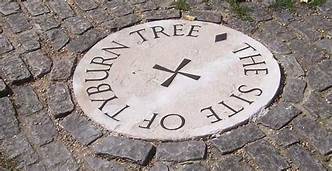
ENGLISH SPEAKING SAINTS MAY 22
St. Boethian, 7th century. Benedictine martyr and a disciple of St. Fursey. An Irishman by birth, Boethian built the Pierrepoint Abbey near Laon, in France. He was murdered there by rebellious monks.
Bl. John Forest, 1538 A.D. Martyr of England, the confessor of the wife of King Henry VIII, Queen Catherine of Aragon. He became a Franciscan at Greenwich at the age of seventeen and studied at Oxford. John opposed Henry’s divorce and the suppression of religious orders. Because of this he was arrested at Newgate and ordered to agree to the Oath of Supremacy. Refusing, John was dragged on a hurdle to Smithfield and then burned to death at the stake. A wooden statue of St. Derfel was burned with John. He was beatified in 1886.
St. Conall, 7th century. Abbot of Inniscoel Monastery in County Donegal, Ireland. A holy well there is named after St. Conall.
0 notes
Quote
ENGLISH SPEAKING SAINTS
April 5 St. Ethelburga, 647 A.D. Wife of King St. Edwin of Northumbria, England, daughter of St. Ethelbert of Kent, also called Tate. St. Paulinus was her chaplain. Ethelburga converted King St. Edwin, and when he died, she founded a convent at Lyminge. Ethelburga served as abbess until her death.
St. Derferl-Gadarn, 5th or 6th century. Welsh hermit, reported to have been in the battle of Camblan, where King Arthur died. He may have been a hermit before becoming a monk at Lianderfel, in Gwynedd, Wales. A carved-wood statue depicting Derfel-Gadarn as a mounted soldier was used to burn Blessed John Forest at Smithfield in 1538, by order of Thomas Cromwell.
0 notes